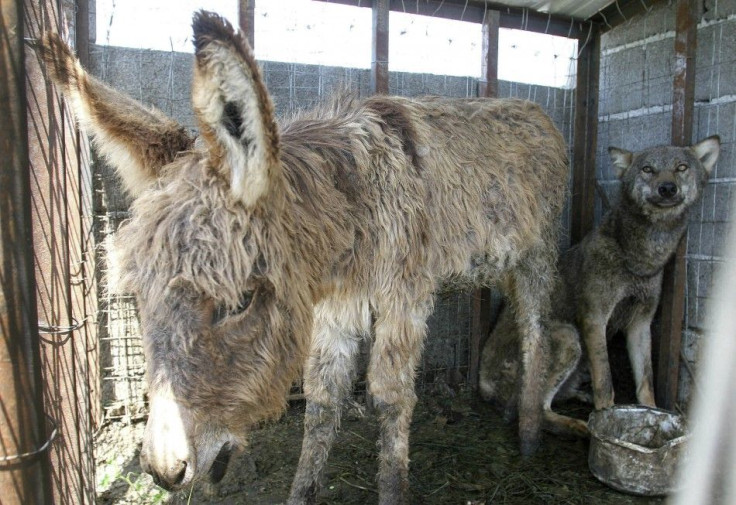Abandoned Donkeys Hit Texas, Again

An alarming Texas drought that hit in 2010 withered fresh pastures and pushed out herds, leaving donkeys abandoned to roam the baron terrain, like destitute refugees in a foreign land.
Although the drought has past, many abandoned donkeys continue to flood the area after ranchers push them out, according to animal rescue operations in the area.
The main purpose of the donkeys before the drought was to guard the animals and herds in the farmland. The animals are hostile towards dogs and wolves. They will bray, bare their teeth, run and chase, and attempt to bite and kick an intruder, according to a Colorado State University fact sheet.
But when the ranchers ran out of food and water, they would cast the donkeys out because they were not worth any market value, says Peaceful Valley Donkey Rescue, the nation's biggest donkey rescue group.
Last week I spent two days on the road and got 20 donkeys each day, Mark Meyers, executive director of Peaceful Valley Donkey Rescue told the Associated Press on Wednesday.
With Hay prices on the rise and little to no crops growing on the baron land, it is too expensive for ranchers to keep the animals on their land.
Donkeys are the only livestock animals that do not increase in value when castrated, according to the animal rescue group, while Cattle, horses, sheep, pigs and goats all gain in market value when castrated and can be sold off easily.
The last ones we tried to sell, they brought the donkeys back to us. They tried to get a $5 bid for both of them and couldn't get a $5 bid, Deputy Bill Pentecost, who wrangles stray livestock for the Williamson County Sheriff's Office north of Austin, told the AP.
Texas has many huge ranches but since the drought many of the cattle have had to be sold to an area where they can graze. There are 1.4 million less cattle in the region since the drought hit, the AP reported, and now all ranchers are left with are donkeys.
It costs Peaceful Valley Donkey Rescue some $1000 dollars to save one donkey. This includes transportation, testing vaccines, de-worming, micro-shipping, feed and care for 12 months, the rescue group wrote on their Website. They cost an additional $160 to be castrated.
As a state, Texas accounts for 90% of PVDR's national rescue resources but contributes less than 5% of PVDR's donation income. Over 300 donkeys have been rescued so far this year in Texas as a direct result of the drought, according to the group.
Founders Mark and Amy Meyers established Peaceful Valley Donkey Rescue as a non-profit organization in 2000. The Meyers, along with their staff, have since rescued thousands of donkeys from abuse, neglect, and abandonment as well as captured hundreds of wild burros throughout the Western States that were under threat of destruction.
© Copyright IBTimes 2025. All rights reserved.





















